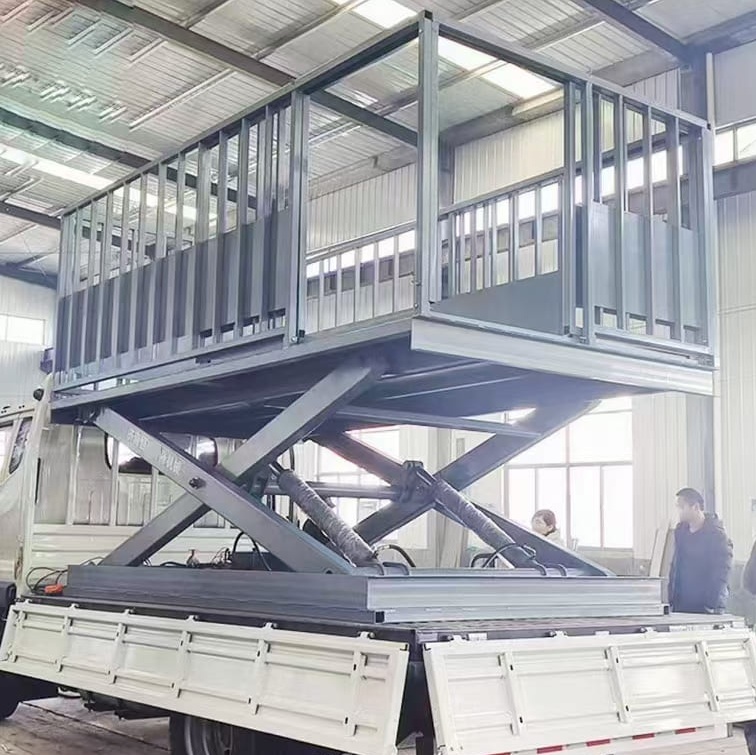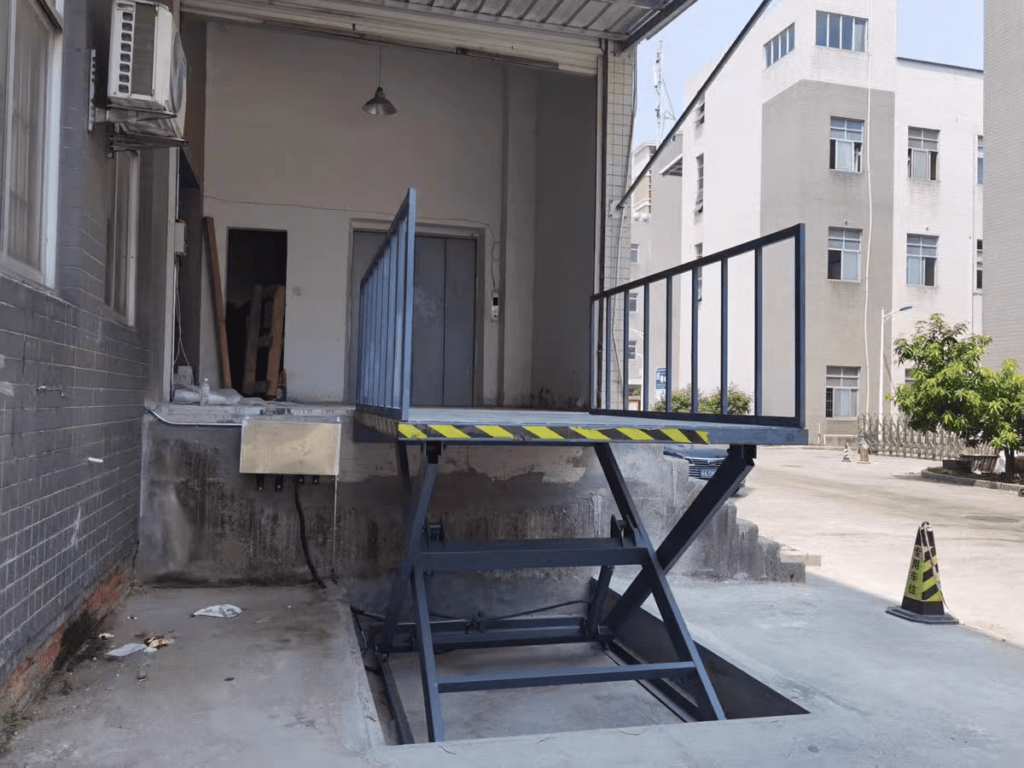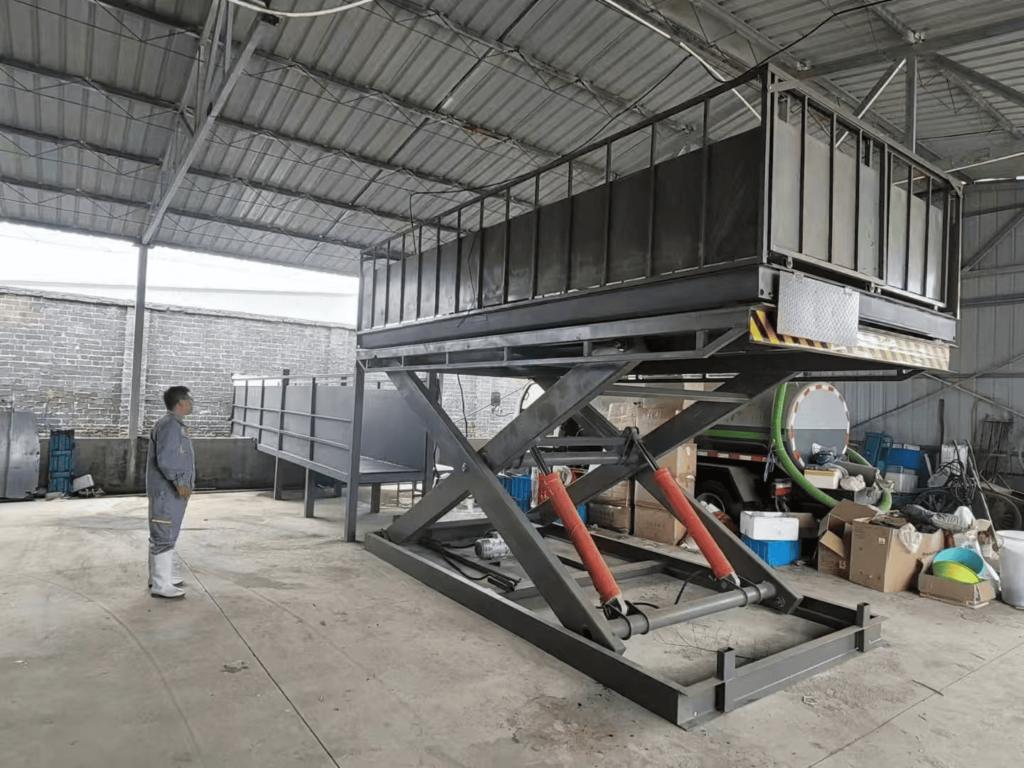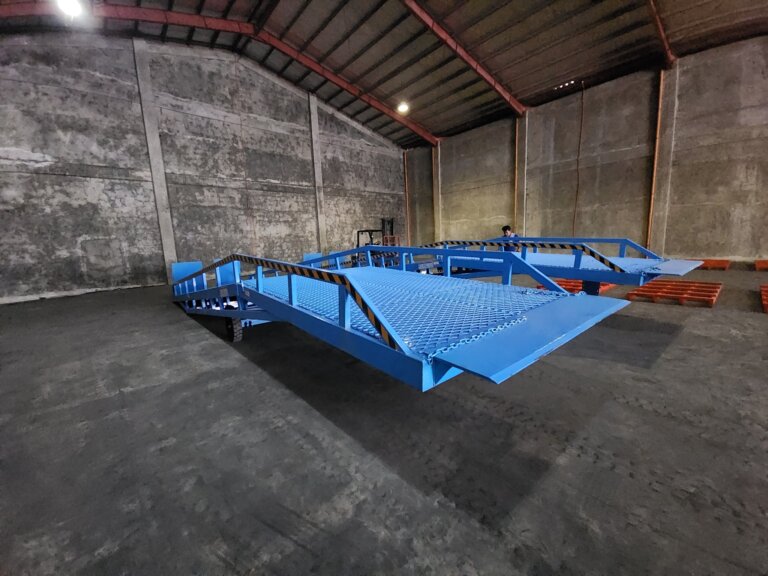1、Introduction
Moving heavy goods between floors can be a challenge in busy warehouses or industrial facilities. Whether you’re dealing with palletized loads, machinery, or raw materials, finding a safe and efficient lifting solution is critical.
2、Common Problems of Floor-to-Floor Cargo Movement
Low Efficiency
Manual handling or makeshift solutions slow down operations
Time wasted on moving goods instead of focusing on production
Bottlenecks often occur during peak loading hours
High Safety Risk
Workers face a high risk of injury when lifting heavy or bulky items
Forklift use on slopes or narrow spaces increases accident potential
Goods are more likely to get damaged during movement
Without the right lifting solution, you’re not just losing time — you’re risking people, products, and profit.
3、Recommended Lifting Solutions
Pit-Mounted Scissor Lift Platform
Best for: Ground-level installation with high load capacity.
Installed in a floor pit to create a flush surface.
Supports heavy-duty loads from 500 kg to 10 tons.
Ideal for pallet jacks, forklifts, or manual loading.
Simple up-and-down motion with hydraulic system.
Low maintenance and long service life.
Perfect for locations that move large goods frequently between two fixed levels.
Guide Rail Freight Elevator (Vertical Cargo Lift)
Best for: Facilities without pit space or needing higher lifting heights.
Wall-mounted lifting platform using guide rails.
Suitable for 2–10 meters lifting height.
Small footprint, no pit required.
Customizable cabin size and doors.
Can be semi-enclosed or fully enclosed for added safety.
A great solution for narrow spaces where scissors lifts aren’t practical.
4、Comprehensive Comparison Table
| Feature | Scissor Lift Platform | Guide Rail Cargo Lift |
|---|---|---|
| Installation Method | Surface or pit-mounted hydraulic system | Wall-mounted lift using rails and chains |
| Pit Requirement | Yes, pit is recommended for floor-level loading | No pit needed, can be fixed on floor directly |
| Lifting Height Range | 1 – 3 meters | 2 – 10+ meters |
| Load Capacity | 500 kg – 10 tons or more | 300 kg – 5 tons |
| Footprint Requirement | Requires large platform area and pit | Compact; ideal for narrow or indoor shafts |
| Lifting Speed | Moderate speed (typically 4–6 m/min) | Faster (typically 6–10 m/min) |
| Safety Performance | High stability with mechanical safety locks | Multiple safety devices (chain break, limit switch) |
| Maintenance Needs | Low; simple hydraulic components, easy to service | Moderate; requires chain/oil/lubrication check |
| Cost Range (Reference) | $1,500 – $8,000+ depending on size/load | $3,000 – $12,000+ depending on height and customization |
| Advantages | Stable, durable, cost-effective, simple maintenance | Space-saving, flexible height, no pit, supports multi-floor |
| Disadvantages | Limited lifting height; needs pit/civil work | Slightly more complex structure; higher initial cost |
| Best Application Scenarios | Warehouses with ground-level access, frequent heavy load transfer | Factories or logistics centers with limited floor space, multi-level transport |
5、Which solution is right for me?
If your lifting height is within 5 meters, we recommend using a Scissor Lift Platform:
Lower maintenance cost
Easier installation
More cost-effective than a guide rail lift
However, if your requirement is above 5 meters, a Guide Rail Cargo Lift is a better choice — ideal for transporting goods between higher or multiple floors.













